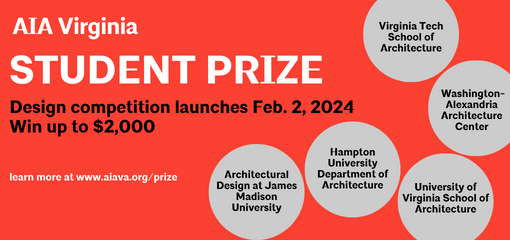Over the first weekend of February, students across the Commonwealth participated in the Virginia Prize. And we were thrilled to have JMU’s Architectural Design program join competitors from Hampton University, UVA, and Virginia Tech (Blacksburg and the WAAC) in addressing the challenge.
This year’s competition was authored by Hampton University. Professor Stanford Britt, FAIA, Professor Carmina Sanchez-de-Valle, RA, and Associate Professor Marci Turner developed a brief that invited students to design a “bookless” public library as a community public room on a corner site at the intersection of N. Mallory Street and E. County Street in Phoebus, Virginia. The project is intended to complement the offerings of the traditional “book-filled” branch library located across the street. And requires students to organize the required indoor and outdoor programmatic elements so that site is building, and building is site, while also addressing resiliency issues such as flooding.
The entries are now being judged by the institutions and selected entries will be forwarded for consideration by the competition jury. We look forward to sharing and celebrating the results.

